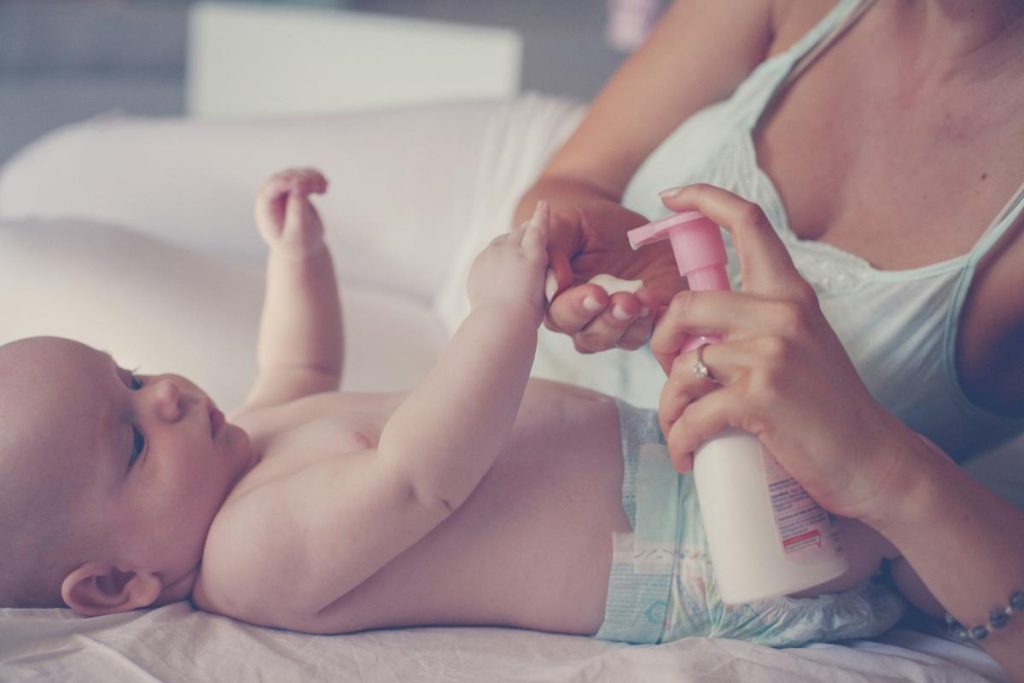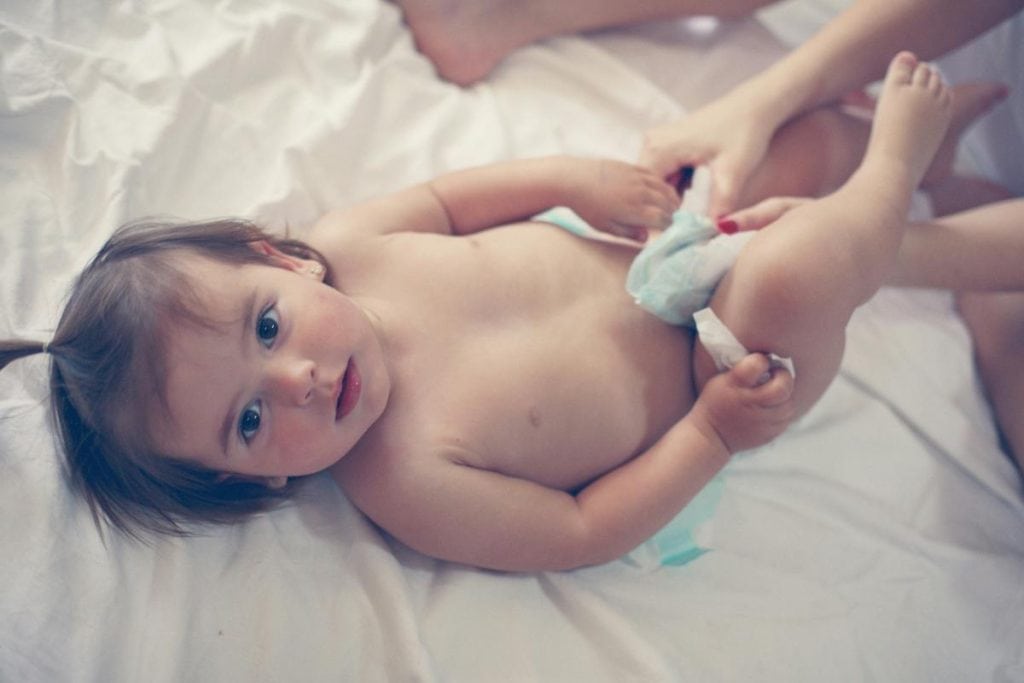
Much of baby skin development occurs during the first two years, with structural changes in the epidermis and dermis leading to thickening of the skin, and the development of melanocytes, which produce melanin – the pigment that gives skin its color and, more importantly, provides protection from the sun’s UV radiation. During this time, baby skin is a lot more delicate and sensitive as compared to adult skin, making babies more vulnerable to irritants, infections, and exposure.
While most parents recognize the need for special care when dealing with baby skin, rashes on babies are fairly common despite our precautions. This is why it’s important for you to understand how to deal with common baby skin conditions, which begins with correctly identifying the rash. You can do this by referring to a visual guide to common skin rashes in children and babies, and by using a symptom checker.
How to Manage Common Baby Rashes
- Diaper Rash – It’s a problem that every parent must deal with at some point because almost every baby develops diaper rash. This affects skin in the diaper region, causing inflammation, redness, and scaling. It develops as a result of prolonged exposure to pee or poo, which can irritate the skin or cause infections.
What to do:
- Change diapers frequently and keep the area clean and dry.
- Apply barrier creams that contain ingredients such as zinc oxide.
- Avoid wet wipes containing fragrances and alcohol-based cleansers.
- Eczema – This skin condition affects one in four babies, causing significant discomfort. It causes drying of the skin, which results in redness, itching, and cracking of the skin. There are various possible causes for baby eczema, including exposure to irritants, genetic factors, and overreaction of the immune system.
What to do:
- Avoid common triggers such as scented soaps and detergents.
- Keep your baby’s skin moisturized and avoid frequent or hot baths.
- Ask your pharmacist about suitable OTC ointments for baby eczema.
- Cradle Cap – As the name suggests, this condition tends to affect the scalp area, causing scaling of affected skin with visible patches that have a yellow and greasy appearance. Fortunately, the condition doesn’t cause much discomfort and can be easily treated with small skin care changes.
What to do:
- Use a baby shampoo and soft-bristle brush to clean your baby’s hair once a day.
- If the scales are stubborn, apply mineral oil or petroleum jelly gently and let it soak before brushing. Wash thoroughly after this.
- Maintain a routine with two or three weekly hair washes to prevent buildup.
- Heat Rash – It’s perhaps the most common summer rash on baby skin, characterized by the development of tiny red bumps on the skin. This can cause some itching and may also lead to blister formation. The problem is usually caused by blockage of the sweat glands.
What to do:
- Allow the skin to cool down with a cool, wet washcloth (not chilled or cold) and by bathing with cool water without soap.
- Dress appropriately in thin cotton fabrics with minimal layers.
- Lower the temperature at home or make sure that the room is well-ventilated.
- Contact Dermatitis – This is a skin reaction triggered by exposure to irritants, which typically includes chemicals in soaps and detergents or cosmetics used by mothers, prolonged exposure to urine, saliva, or feces, and contact with certain metals, which may be found in some baby products.
What to do:
- Try to identify and eliminate all exposure to the irritants.
- Keep the affected area clean and use cool compresses to soothe inflammation.
- Use barrier creams and OTC ointments to soothe irritated skin.

While this information should help you deal with some of the most common types of baby rashes, it’s imperative that you speak with your pediatrician as soon as possible, especially if you’re faced with a baby rash that does not respond to home treatment quickly. Doctors can prescribe steroidal creams and antihistamines for severe baby rashes, but these should be used only as directed.
